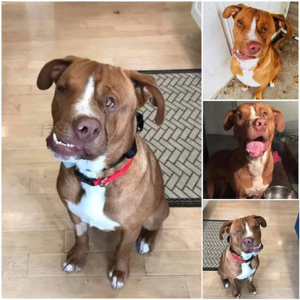Title:
Understanding and Treating Large Tumors in Dogs: What Pet Owners Need to Know
Introduction
Dogs, like humans, are susceptible to various health issues as they age, including the development of tumors. A tumor on a dog’s leg can be alarming, especially if it’s large and growing quickly. While not all tumors are cancerous, any noticeable lump or growth should be examined by a veterinarian. This article will cover the causes of tumors in dogs, types of common tumors, symptoms to watch for, and potential treatment options.

Types of Tumors in Dogs
Tumors can be benign or malignant. Benign tumors are typically harmless and grow slowly without spreading to other body parts. Malignant tumors, however, are cancerous and may spread aggressively if left untreated. Some of the most common types of tumors that appear on dogs’ legs include:
- Lipomas – These are soft, fatty lumps that are generally benign and common in older dogs. Lipomas are usually painless but can grow large and uncomfortable over time.
- Mast Cell Tumors – These tumors can vary in appearance and behavior. They are malignant and often require surgery and sometimes chemotherapy.
- Fibrosarcomas – These tumors are malignant and tend to grow within the connective tissue of the leg. They are aggressive and may require surgical removal.
- Osteosarcoma – This is a type of bone cancer that commonly affects the legs of larger dog breeds. It is extremely aggressive and usually requires a combination of surgery and chemotherapy.
Causes of Tumors in Dogs
There is no single cause of tumors in dogs, but certain risk factors can increase the likelihood of tumor development. Age is a primary factor, as dogs over the age of seven are at higher risk. Additionally, genetics can play a role, with some breeds, such as Boxers, Golden Retrievers, and Rottweilers, being more prone to cancer. Environmental factors, like exposure to chemicals or toxins, may also increase the risk.

Symptoms to Watch For
Owners should keep an eye on their dog’s overall health and look for symptoms such as:
- A growing lump or mass, especially if it changes in size or shape
- Limping or difficulty walking
- Swelling or inflammation around the tumor
- Pain or sensitivity in the affected area
- Lethargy, loss of appetite, or changes in behavior
If you notice any of these symptoms, it’s essential to schedule a veterinary appointment as soon as possible. Early detection can significantly improve the chances of successful treatment.
Diagnosis and Treatment Options
A veterinarian will perform a thorough physical examination to assess the tumor. Diagnostic tests such as biopsies, X-rays, ultrasounds, and blood tests may be used to determine the type and extent of the tumor.
- Surgical Removal – Surgery is the most common treatment for tumors, especially if the tumor is benign or localized. Removing the tumor entirely may eliminate the issue if it has not spread to other parts of the body.
- Radiation Therapy – For malignant tumors that cannot be entirely removed surgically, radiation therapy can help control growth and alleviate pain.
- Chemotherapy – Chemotherapy is often used for aggressive or malignant tumors, especially if there is a risk of cancer spreading. Some dogs handle chemotherapy well, but others may experience side effects.
- Palliative Care – In cases where the tumor cannot be removed or treated effectively, palliative care can improve the dog’s quality of life. This may include pain management, nutritional support, and physical therapy.
Preventive Measures and Care
While not all tumors can be prevented, keeping a dog healthy through a balanced diet, regular exercise, and routine veterinary care can help minimize risk. For dogs with a family history of cancer, genetic testing may provide insight into their likelihood of developing certain types of tumors.
Conclusion

A large tumor on a dog’s leg can be concerning, but early intervention can make a significant difference in treatment outcomes. By staying vigilant and seeking prompt veterinary care, pet owners can help their dogs lead healthier, happier lives.





